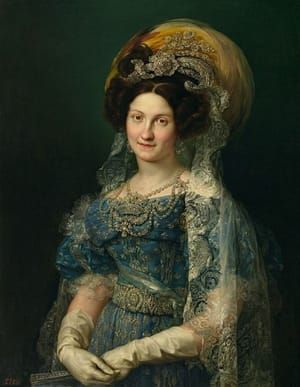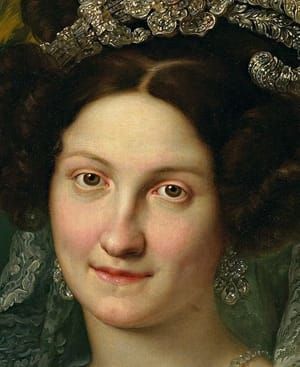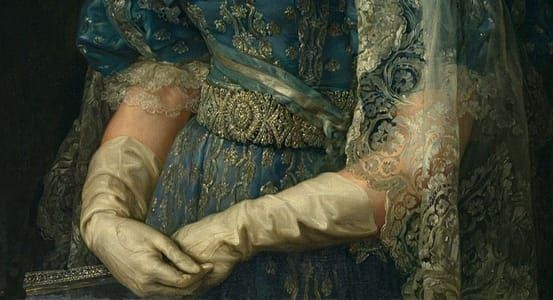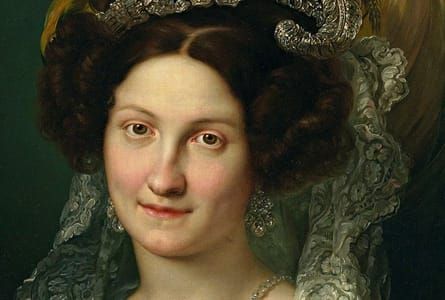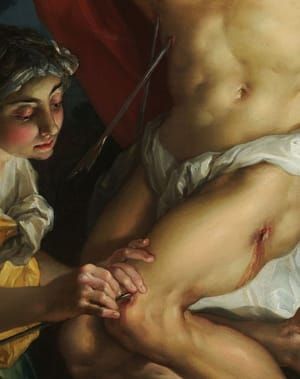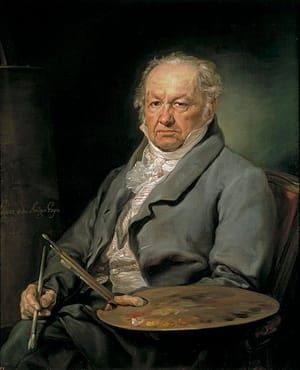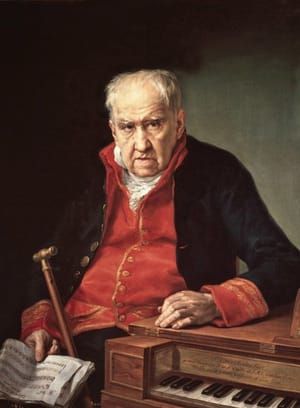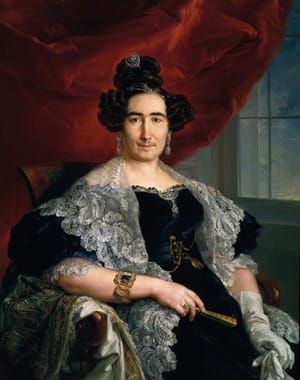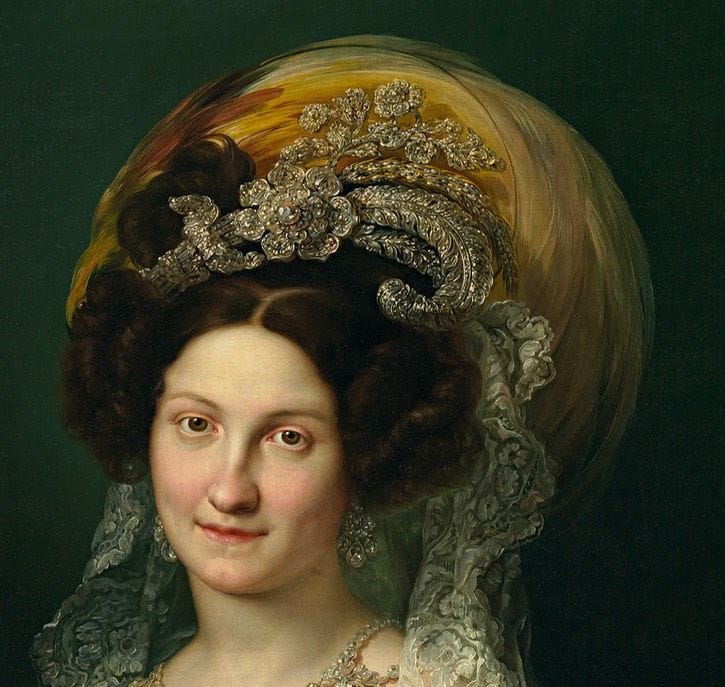

María Cristina de Borbon, Queen of Spain, 1830
Vicente López y Portaña
With this wedding portrait of María Cristina de Borbón, painted by Vicente López in 1830, we begin a journey through the 19th century, in which we will find three women at the center of political power. Two as regents, Maria Cristina de Borbón and Maria Cristina de Habsburgo, and one as queen: Isabella II. The three embody a transcendental step in the history of Spain that goes from the absolutism of Ferdinand VII to bourgeois liberalism.
(Google translation of http://www.museosenfemenino.es/museo_prado/mujeres_poder/maria-cristina-de-borbon-reina-de-espana)
The fourth wife of King Ferdinand VII of Spain and the wife who finally gave him an heir, Maria Christina of the Two Sicilies (Italian: Maria Cristina Ferdinanda) was born in Palermo, Sicily on April 27, 1806. She was the second of the 12 children of King Francis I of the Two Sicilies and his second wife Infanta María Isabella of Spain, sister of King Ferdinand VII of Spain....
Irish novelist and journalist Marguerite Gardiner, Countess of Blessington, who met Maria Christina on her Grand Tour of Europe, described her as having flawless facial features, beautiful teeth, expressive eyes, and a charming smile. Maria Christina was lively and cheerful, showed an early fondness for hunting, and a talent for painting. In 1829, the thrice-widowed King Ferdinand VII of Spain was asked by the government to marry again to provide an heir to the throne. Luisa Carlotta of the Two Sicilies, Maria Christina’s elder sister, was married to her maternal uncle and Ferdinand’s brother Infante Francisco de Paula of Spain, and she suggested Maria Christina as a marriage candidate. It did not take long for the 45-year-old Spanish king, who was Maria Christina’s maternal uncle, to decide that Luisa Carlota’s 23-year-old sister was an ideal choice. The court of the Kingdom of the Two Sicilies agreed and Maria Christina traveled to Madrid. On December 11, 1829, the wedding took place and the celebrations continued until the new year.
Ferdinand was delighted with his young wife, who soon had a great influence on him. Until his marriage to Maria Christina, he had fathered no surviving child. While the moderate and liberal parties now pinned their hopes on an heir from the new queen, the absolutists (Carlists) favored Ferdinand’s younger brother, Infante Carlos, Count of Molina as the heir apparent. Maria Francisca of Portugal, first wife of Infante Carlos, and her sister, Maria Teresa, Princess of Beira, second wife of Infante Carlos, competed with Maria Christina and her sister Luisa Carlota for influence at the Spanish court. Soon after her marriage, Maria Christina became pregnant. On March 29, 1830, Ferdinand VII issued the Pragmatic Sanction, allowing daughters to succeed to the Spanish throne as well as sons. This meant that Infante Carlos would be displaced in the line of succession by Ferdinand’s children of both genders. Infante Carlos and the Carlists fiercely resisted this decision....
Two months after Ferdinand died, on December 28, 1833, Maria Christina secretly married an ex-sergeant of the royal guard, Agustín Fernández Muñoz. The couple had 8 children....
(http://www.unofficialroyalty.com/maria-christina-of-the-two-sicilies-queen-of-spain/)
Uploaded on by Suzan Hamer
Vicente López y Portaña
artistArthur
Wait what?
